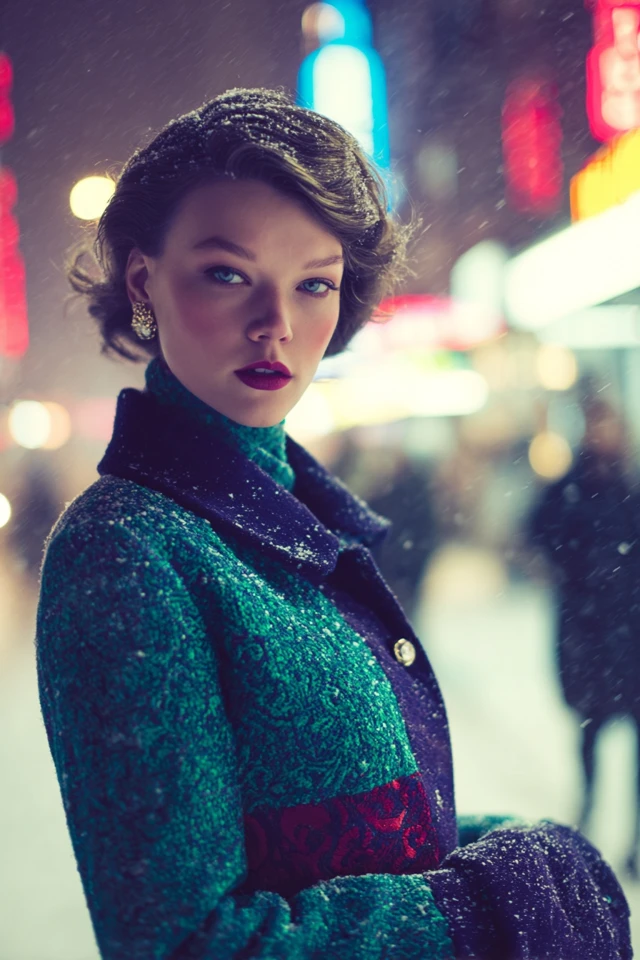Introduction
One brisk winter morning, I found myself standing in front of my closet, wrapped in a thick wool scarf yet feeling uninspired by the typical layers of dull neutrals I’d gravitate towards each season. That moment sparked a realization: winter fashion doesn’t have to be just functional—it can be a form of empowering self-expression, rich with personality and history. Embracing retro style allows me to weave that heritage of elegance and bold character with the cozy warmth essential for winter days.
Winter retro dressing offers something truly special—it blends timeless silhouettes and vibrant color palettes that evoke nostalgia while embracing modern sensibilities. By channeling the spirit of vintage fashion icons with a contemporary twist, we create ensembles that tell personal stories and command attention without sacrificing comfort. This connection to the past empowers us to step into the present wearing confidence and flair.
About the Author and My Trend Boutique
Understanding why retro styles resonate so deeply requires delving beyond aesthetics into how clothing influences perception and mood. This guide will navigate through foundational concepts in color psychology, trend forecasting, and body-conscious styling, marrying theory with practical advice. Whether you’re a seasoned vintage lover or a newcomer ready to refresh your winter wardrobe, you’ll discover how to make winter retro dressing a meaningful and stylish adventure.
Foundational Concepts
Before diving into specific winter retro pieces, it’s important to ground ourselves in three foundational ideas that shape lasting style and confidence.
Color Psychology
Colors are not mere visual elements; they communicate emotions and influence perceptions on a subconscious level. According to extensive research in color psychology, hues like deep reds evoke passion and vigor, while soft blues bring calmness and reliability. Retro palettes often feature saturated jewel tones, mustards, and mint greens, which can profoundly affect your mood and how others perceive your presence.
For example, a classic ruby-red coat is not just a nod to mid-century glamour but a strategic choice that commands attention and warmth. I recall a presentation where wearing a well-chosen color dramatically shifted the room’s energy, boosting my confidence and engagement.
Trend Forecasting
Dressing retro does not mean ignoring contemporary trends; rather, it means integrating them thoughtfully. Trend forecasting takes into account cultural shifts, runway innovations, and consumer behavior to predict what will captivate the fashion world. Experienced stylists and designers often draw from past decades, adapting silhouettes, fabrics, and colors for today’s context.
For instance, the resurgence of bold shoulders and textured knits echoes 1980s silhouettes but enhanced with modern tailoring. By recognizing these patterns, you can curate a wardrobe that feels relevant, fresh, and uniquely yours.
Dressing to Impress
“Dressing to impress” isn’t about vanity—it’s a psychological strategy to influence how you feel and are perceived. When your outfit aligns with your aspirations and environment, it nurtures self-assurance and commands respect. The retro aesthetic’s structured pieces—like tailored trousers, cinched waists, and statement accessories—help frame the body in flattering ways, projecting authority with femininity.
Through my academic studies and personal style experiments, I’ve learned that dressing well acts as non-verbal communication, shaping first impressions long before words are spoken.
Picture Gallery
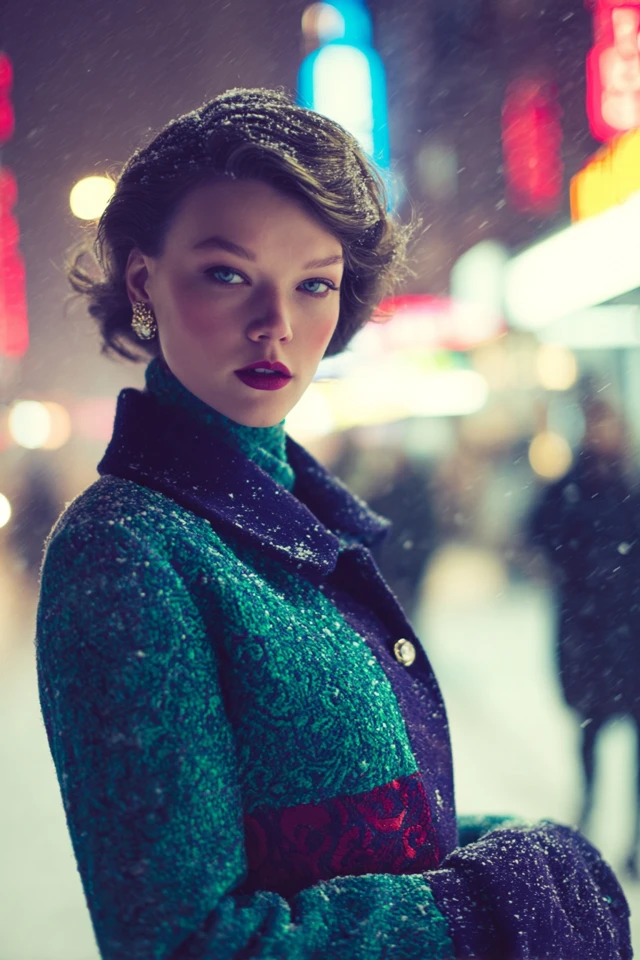
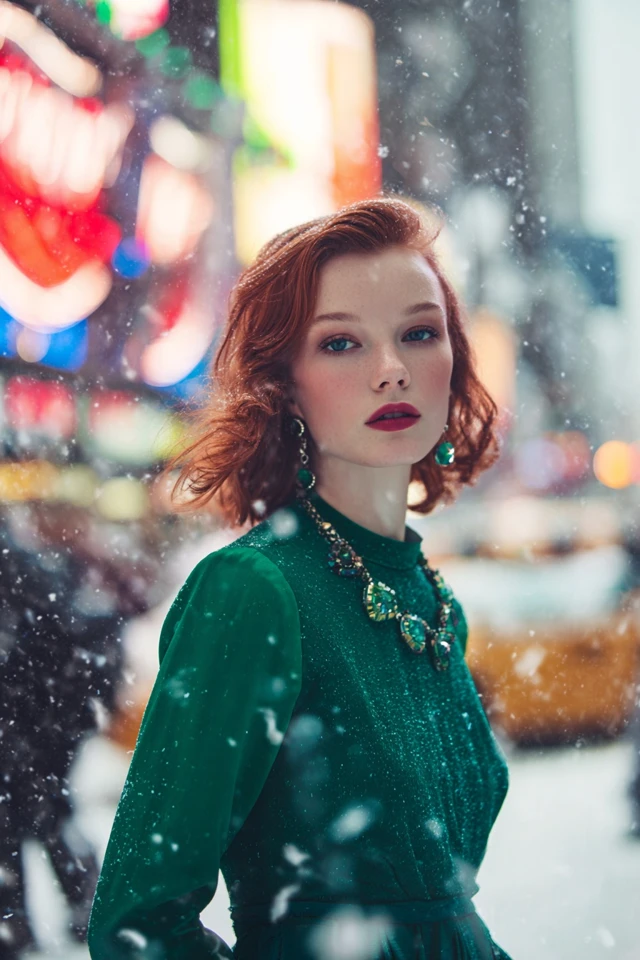
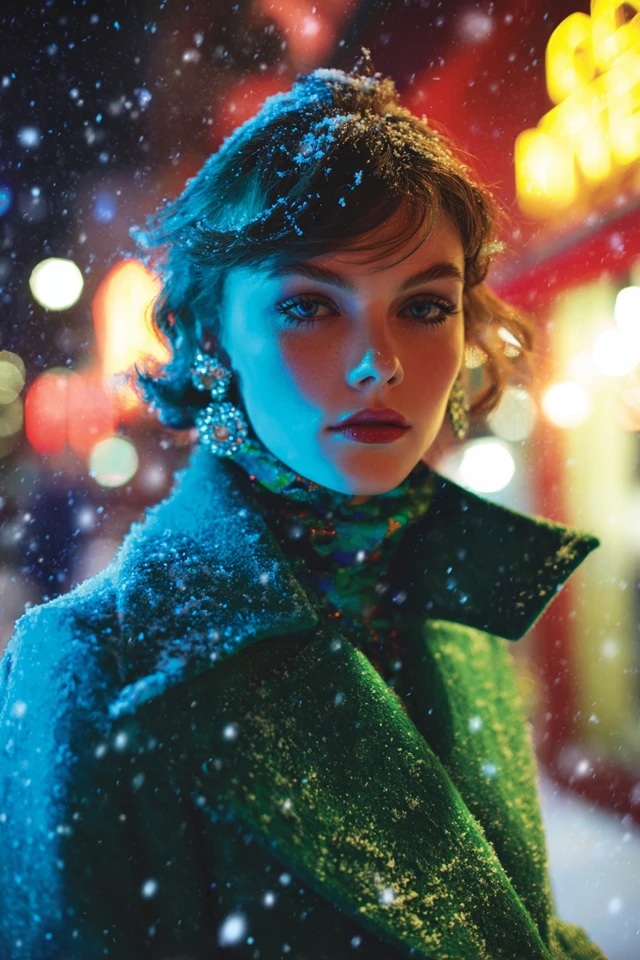
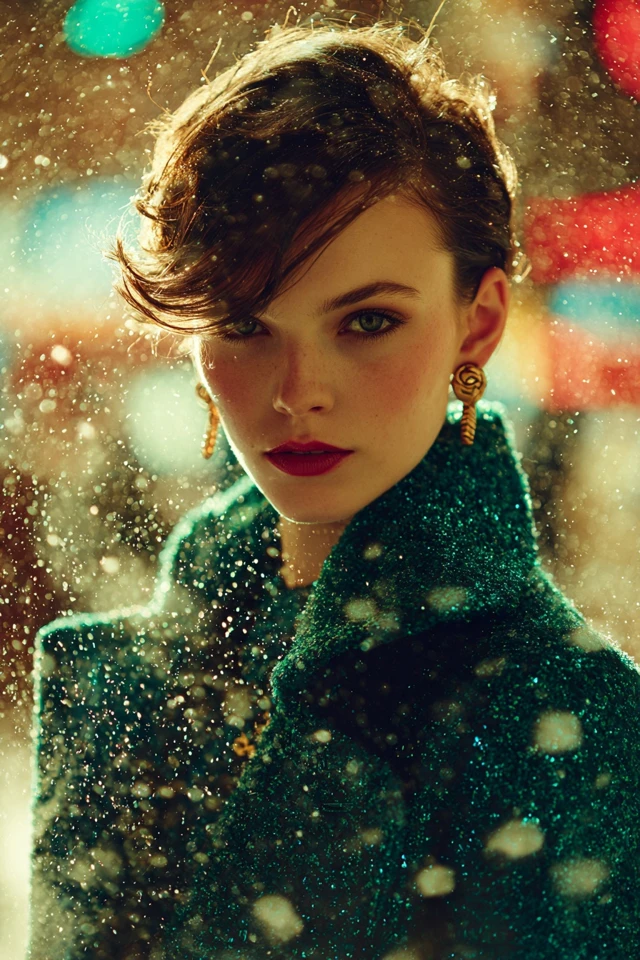
Color Psychology & Emotional Impact
Color is one of the most powerful tools in your winter retro palette, impacting everything from mood to personal magnetism. Studies in first-impression science reveal that color choices can affect perceived trustworthiness, competence, and vitality within seconds. Understanding this, retro dressing becomes an intentional form of emotional design.
Warm Colors: Vintage winter styles often leverage warm tones like burnt orange, mustard yellow, and rich burgundy. These hues create feelings of warmth and comfort—perfect for cold days—while evoking a sense of nostalgia. Burberry’s iconic camel and chestnut shades, for example, tap into both warmth and timelessness.
Cool Colors: Conversely, cooler tones such as teal, navy blue, and forest green not only appear sophisticated but also stabilize mood and project calm confidence. Combining these with contrasting textures—like velvet or faux fur trims—adds depth and visual interest essential to retro aesthetics.
When selecting colors, consider your emotional state and desired impression. A bold cobalt blue dress can invigorate your spirit and command attention at winter gatherings, while muted pastel scarves soften your appearance and invite approachable warmth.
Personal Style & Body Type Considerations
Winter retro dressing truly shines when tailored to your unique figure and complexion. The key is to highlight your best features by choosing silhouettes, fabrics, and hues that complement your body and skin tone.
Silhouettes & Fabrics
- Hourglass: Emphasize your waist with cinched coats, wide belts, and fit-and-flare dresses. Fabrics like wool blends and structured tweeds maintain shape while providing warmth.
- Pear Shape: Balance proportions by opting for A-line skirts or wide-leg trousers paired with embellished or padded shoulders to add volume on top.
- Apple Shape: Draw attention upward with statement collars, scarves, and patterned knitwear. Lightweight layering prevents bulk around the midsection.
- Rectangle: Create curves using peplums, gathered waists, and fluid fabrics like silk or cashmere to add softness and dimension.
Complexions & Hues
- Cool undertones: Jewel tones such as emerald green, sapphire blue, and amethyst purple resonate best.
- Warm undertones: Earthy colors like rust, mustard yellow, olive, and cream enhance radiance.
- Neutral undertones: Versatile in both warm and cool palettes; explore muted tones such as dusty rose or slate gray.
Quick Winter Retro Style Quiz
Answer these to find your ideal winter retro essence:
- Do you prefer structured or fluid silhouettes?
- Which colors energize you or calm your mood?
- Are you drawn more to bold statement pieces or subtle timeless accessories?
- What textures feel cozy yet elegant to you?
- Which vintage decade speaks to your personality most vividly?
Reflecting on these questions guides you toward a cohesive, confident winter wardrobe.
Current Trends & Timeless Classics
While retro dressing naturally honors the past, blending in current trends ensures your style feels contemporary and vibrant. Today, we’re seeing a fascinating mix of nostalgic influences and modern minimalism.
- Trending Colors: Rich jewel tones remain popular, accented by emerging shades of soft lavender and moody charcoal. Layering multiple shades of the same color family—known as tonal dressing—is particularly chic.
- Key Styles: Oversized blazers with shoulder pads, wide-leg trousers, pleated midi skirts, and chunky knits are dominating both street style and high fashion. Faux fur collars and capes add a regal touch reminiscent of the ‘40s and ‘50s.
- Timeless Classics: A well-fitted trench coat, leather gloves, and cashmere scarves are pillars of retro winter dressing that never go out of style. Investing in these guarantees versatility season after season.
By combining these trends with your vintage finds—perhaps a ‘60s mod dress or ‘70s velvet jacket—you create a curated wardrobe that feels fresh yet deeply authentic.
Practical Tips & Recommendations
To master winter retro dressing with style and confidence, consider these actionable strategies:
- Smart Shopping: Seek quality over quantity. Thrift shops, vintage boutiques, and online platforms can yield unique treasures—look for natural fibers like wool, cashmere, and silk for warmth and texture.
- Wardrobe Maintenance: Proper care extends the life of delicate vintage fabrics; always dry clean or hand wash wool coats and use cedar blocks or lavender sachets to deter moths.
- Layering Techniques: Start with thermal or fitted base layers in subtle colors to avoid bulk. Incorporate skirts with tights, or tailored trousers with turtlenecks and blazers to stay both warm and sophisticated.
- Accessories: Retro accessories make a powerful statement—think pearl earrings, brooches, leather gloves, and structured handbags. Choose one bold piece per outfit to avoid over-accessorizing.
- Color Combinations to Try: Pair mustard yellow scarves with deep navy coats; contrast burgundy knits with camel trousers; or match teal dresses with rust-colored boots. Visual aids illustrating these combos can deepen understanding (e.g., “color swatch: mustard yellow #D2A400 with navy blue #1A2E5B”).
These tips aim to make your winter retro dressing not just beautiful but practical and sustainable.
FAQs
- Q1: How do I choose my signature color for winter retro dressing?
A1: Identify shades that enhance your skin undertone and resonate emotionally with you. Experiment with jewel tones or muted earth colors, then notice which make you feel most confident. - Q2: Can I update my retro wardrobe on a budget?
A2: Absolutely! Focus on versatile staples and invest selectively in statement pieces. Thrift stores and online vintage shops offer affordable, authentic options. Consider DIY alterations to personalize fits. - Q3: What are the essentials for a winter retro capsule wardrobe?
A3: Key items include a tailored wool coat, turtleneck sweaters, high-waisted trousers, A-line skirts, statement accessories, and quality boots. These items mix and match easily for multiple looks. - Q4: How do I balance practicality with style in cold climates?
A4: Layer smartly with thermal undergarments and choose fabrics that insulate without heaviness. Prioritize fashion-forward outerwear and accessories that add warmth, like scarves and gloves, without sacrificing your retro integrity. - Q5: What vintage eras blend best with modern winter wardrobes?
A5: The 1950s and ‘70s styles integrate well with contemporary pieces. The structured silhouettes of the ‘50s and the relaxed, textured knits of the ‘70s offer versatility and strong visual impact.
Conclusion
Winter retro dressing is more than just a nod to the past—it’s a profound form of self-expression deeply rooted in color psychology, tailored styling, and thoughtful trend incorporation. As we’ve explored, understanding how colors affect mood and perception, and aligning silhouettes with body and personality, empowers your wardrobe to become a source of confidence and joy.
Don’t be afraid to experiment with layering, playing with vintage finds, and infusing your unique spirit into every outfit. This journey invites you to rediscover classic elegance and vibrant individuality in a season that often feels visually repetitive.
I encourage you to share your winter retro transformations, insights, and questions in the comments below. Subscribe for more fashion wisdom and enjoy crafting a winter style that feels authentically you—because true style never goes out of fashion.

